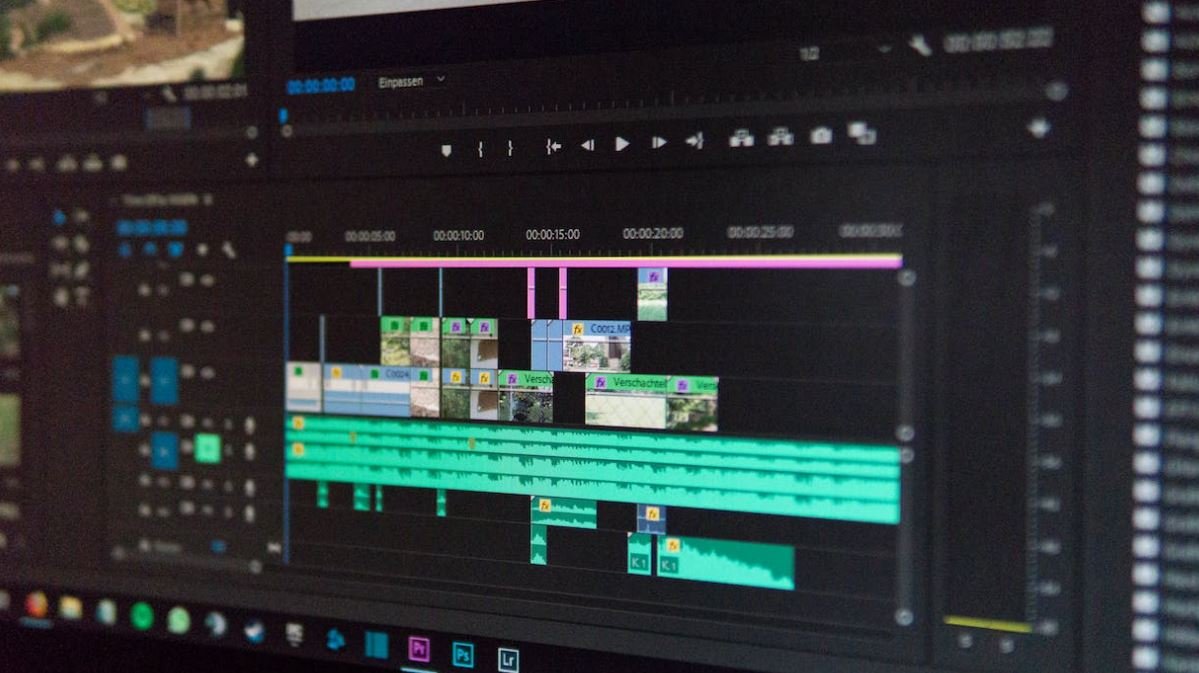OpenAI: What Is a Token?
In the field of Natural Language Processing (NLP), tokens play a vital role in representing words and characters in a textual context. OpenAI, a leading AI research organization, defines tokens as the smallest unit of text. Let’s delve deeper into the concept of tokens and understand their significance in NLP.
Key Takeaways:
- Tokens represent the smallest units of text in NLP.
- They can be words, characters, or morphemes.
- Tokenization is the process of breaking text into tokens.
**Tokenization** is the process of breaking down a sequence of text into its constituent tokens. These tokens can be **words**, **characters**, or even **morphemes** (the smallest meaningful units of language). In NLP, tokenization plays a crucial role as it serves as the foundation for various downstream tasks such as language modeling, information retrieval, and machine translation. Tokenization enables effective processing and analysis of textual data using machine learning algorithms, as it transforms unstructured text into structured representations. *Tokenization forms the initial step in many NLP pipelines, allowing for subsequent processing and analysis of textual data.*
Types of Tokenization:
There are different types of tokenization strategies employed in NLP, depending on the specific requirements and objectives of the task at hand. Some common types include:
- **Word Tokenization**: This involves breaking text into individual words.
- **Sentence Tokenization**: This involves splitting text into sentences.
- **Character Tokenization**: This involves representing each character in the text as a separate token.
*Tokenization strategies can be combined based on the context and requirements of the NLP task to achieve desired results.*
Tokenization Example:
Let’s consider a simple example to understand tokenization better. Suppose we have the following sentence:
“OpenAI is revolutionizing artificial intelligence.”
Applying word tokenization to this sentence would result in the following tokens:
| Token ID | Token |
|---|---|
| 1 | OpenAI |
| 2 | is |
| 3 | revolutionizing |
| 4 | artificial |
| 5 | intelligence |
In this example, the sentence is broken down into separate words, and each word becomes a token.
Importance of Tokenization:
Tokenization is crucial in NLP for various reasons:
- **Standardization**: Tokenization helps in standardizing text representations, enabling consistent analysis across different sources.
- **Language Modeling**: Tokens serve as input for language models, allowing the systems to learn patterns and generate coherent sentences.
- **Information Retrieval**: Tokenization facilitates efficient retrieval of relevant information from large textual datasets.
*Tokenization provides a foundational step in NLP tasks, enhancing the accuracy and efficiency of subsequent analysis.*
Challenges in Tokenization:
While tokenization is a powerful technique, it also presents certain challenges:
- **Ambiguity**: Ambiguous words can have multiple interpretations, leading to different tokenizations.
- **Languages**: Tokenization may vary across different languages due to variations in grammar and syntax.
- **Special Cases**: Certain cases, like abbreviations, possess challenges in tokenization as they can have different token boundaries.
*Overcoming these challenges requires careful consideration of context, syntax, and language-specific rules.*
Conclusion
Tokenization forms the fundamental building block in NLP, breaking down text into manageable units. It enables the effective processing and analysis of textual data, allowing for various downstream NLP tasks. Understanding tokens and their significance is essential in harnessing the power of NLP and advancing AI research.

Common Misconceptions
Misconception 1: Tokens and coins refer to the same thing
Many people mistakenly believe that tokens and coins are interchangeable terms, particularly in the context of blockchain and cryptocurrencies. However, in the realm of OpenAI and its token-based models, the term “token” has a different meaning.
- Tokens represent chunks of text used to train language models.
- Unlike coins, tokens are not a form of digital currency or an alternative to traditional money.
- Tokens are used to represent input and output data in natural language processing tasks.
Misconception 2: Tokens are physical or tangible objects
Another common misconception is that tokens in the context of OpenAI are physical or tangible objects. This misunderstanding can stem from the colloquial use of “token” to describe physical items such as poker chips or game tokens. However, when referring to OpenAI’s tokens, they are entirely virtual and exist in the digital realm.
- OpenAI tokens are digital representations of text segments.
- They are used to tokenize language data for processing by machine learning models.
- These tokens have no material existence and are purely computational units.
Misconception 3: More tokens always mean better performance
Some people mistakenly assume that the number of tokens used in OpenAI models directly correlates with performance and accuracy. While having a larger number of tokens can potentially lead to better results, it does not guarantee superior performance in all cases.
- The quality and relevance of the training data and model architecture also affect performance.
- In some scenarios, smaller models with fewer tokens can still achieve impressive performance.
- Factors such as training strategy and input data preprocessing also play crucial roles in performance.
Misconception 4: Tokens have a fixed length or size
A common misconception is that tokens always have a fixed length or size, which is not the case in OpenAI’s token-based models. Tokens can vary in length depending on the text they represent, and their length is often determined by the specific model architecture and training techniques.
- The length of tokens can vary from a few characters to entire sentences or paragraphs.
- Each token represents a meaningful unit of text and can differ greatly in size.
- Model constraints and efficiency requirements may impose certain limitations on token length.
Misconception 5: All tokens carry equal significance
It is incorrect to assume that all tokens have equal significance or carry the same weight in OpenAI models. Tokens can have varying importance depending on their context and position in a text sequence. Understanding the relative importance of tokens is crucial for effective natural language processing.
- Tokens at the beginning or end of a sequence can have different roles and significance.
- Certain tokens may be important for determining the meaning or intent of a sentence.
- Attention mechanisms and contextual embeddings enable models to differentiate token significance.

The History of Tokenization
Tokenization is not a new concept and has been used in various industries for centuries. The idea behind tokenization is to represent something of value with a unique symbol or code. This approach has been especially prominent in the world of finance, where tokens have been used to represent currency, stocks, or other assets. The following table showcases some key milestones in the history of tokenization:
| Year | Development |
|---|---|
| 1300 AD | Chinese merchants use promissory notes as tokens to represent value. |
| 1792 | The New York Stock Exchange is established, introducing stock certificates as tokens of ownership. |
| 1970 | ATMs are introduced, revolutionizing the way tokens (banknotes) are used in financial transactions. |
| 2009 | Bitcoin, the first decentralized cryptocurrency, is introduced with the concept of digital tokens. |
| 2015 | Ethereum blockchain introduces the ERC-20 standard, enabling the creation of tokens for decentralized applications. |
Token Types in the Digital Era
In the digital age, tokens have taken on new forms and functionalities. They are not confined to representing physical assets but can also represent access rights, membership, or even in-game items. Here are some interesting token types prevalent today:
| Type | Definition |
|---|---|
| Utility Tokens | Tokens that provide access to a product or service within a specific platform or ecosystem. |
| Security Tokens | Tokens that represent ownership in a company or asset, with potential financial returns. |
| NFTs (Non-Fungible Tokens) | Tokens that are unique and indivisible, representing ownership of digital or physical assets. |
| Gaming Tokens | Tokens used within virtual worlds or gaming platforms to buy, sell, or trade in-game items. |
| Stablecoins | Tokens pegged to a stable asset (e.g., fiat currency) to reduce price volatility. |
Advantages of Tokenization
Tokenization brings several advantages to different industries and use cases. By converting assets or concepts into tokens, various benefits can be achieved. The following table highlights some key advantages of tokenization:
| Advantage | Explanation |
|---|---|
| Liquidity | Tokens can be easily traded on exchanges, providing increased liquidity for assets. |
| Accessibility | Tokens can be divided into fractional units, enabling access to investments with lower entry barriers. |
| Automation | Smart contracts can automate transactions, eliminating intermediaries and reducing administrative costs. |
| Transparency | Blockchain-based tokens allow for transparent tracking of ownership and transaction history. |
| Interoperability | Standards like ERC-20 enable compatibility and interoperability between different tokenized systems. |
Tokenization in Real Estate
Tokenization has the potential to disrupt the traditional real estate market, offering increased accessibility, liquidity, and fractional ownership opportunities. The table below presents the tokenization of a luxury property as an illustrative example:
| Property Token | Value |
|---|---|
| Tokenized Property | $5,000,000 |
| Tokens Issued | 500,000 |
| Token Price | $10 per token |
| Investment Minimum | 10 tokens ($100) |
| Liquidity Period | 5 years |
The Rise of Token-Based Financing
Tokens have redefined fundraising methodologies, making it easier for startups and projects to secure funding. Here are some notable token-based financing models:
| Model | Description |
|---|---|
| Initial Coin Offering (ICO) | A crowdfunding method where companies issue tokens in exchange for investment to fund their projects. |
| Security Token Offering (STO) | Similar to an IPO, companies issue security tokens that represent ownership or equity in the organization. |
| Initial DEX Offering (IDO) | A type of token sale that takes place on a decentralized exchange, often associated with DeFi projects. |
| Non-Fungible Token Offering (NFTO) | A fundraising approach where unique NFTs are sold, potentially entailing access to exclusive content or experiences. |
| Decentralized Autonomous Organization (DAO) Funding | Tokens are distributed to participants who can collectively make decisions on the organization’s projects and investments. |
The Tokenization of Art
Art has also embraced tokenization, revolutionizing the way artists sell and buyers invest in artwork. The table below showcases a tokenized art sale:
| NFT Artwork | Value |
|---|---|
| Tokenized Art Piece | $100,000 |
| Tokens Issued | 10,000 |
| Token Price | $10 per token |
| Artist’s Royalty | 10% of secondary market sales |
| Exclusivity Period | 5 years |
Tokenization and Supply Chain Management
Supply chain management is undergoing a transformation with the adoption of tokenization, bringing enhanced traceability, transparency, and efficiency. The following table presents a tokenized supply chain use case:
| Supply Chain Token | Value |
|---|---|
| Tokenized Product | $50 |
| Product Tokens Issued | 1,000 |
| Token Price | $0.05 per token |
| Provenance Verification | Each token reflects the product’s origin, manufacturing, and journey throughout the supply chain. |
| QR Code Integration | Consumers can scan a QR code on the product package to retrieve detailed information about its tokenized history. |
Tokenized Voting Systems
Tokenization can revolutionize voting systems, introducing transparency, security, and seamless remote participation. The table below shows an example of a token-based voting system:
| Voting Token | Value |
|---|---|
| Tokenized Vote | 1 |
| Total Voters | 10,000 |
| Token Price | $0 (each eligible voter receives one token for free) |
| Blockchain Validation | Each vote token is recorded on a blockchain for tamper-proof and auditable voting process. |
| Public Verification | Voters can verify the accuracy of the counted votes through a transparent blockchain explorer. |
The Future of Tokenization
The rise of blockchain technology and the growing acceptance of tokens have paved the way for a tokenized future. Whether it’s fractional ownership, decentralized finance, or innovative fundraising models, tokens are transforming various industries. The broadening applications of tokenization indicate a paradigm shift in how we interact with assets and participate in economic activities. As the technology evolves, we can expect more groundbreaking use cases and further integration of tokens in our everyday lives.
Frequently Asked Questions
What is a token?
Answer
Why are tokens important in OpenAI?
Answer
How is a token defined in OpenAI?
Answer
Can you provide examples of tokens in OpenAI?
Answer
Are there different types of tokens in OpenAI?
Answer
What is the purpose of tokenization in OpenAI?
Answer
How does tokenization affect language models?
Answer
Is there a limit on the number of tokens in OpenAI?
Answer
What happens if my text exceeds the maximum token limit?
Answer
Can tokenization impact the accuracy of OpenAI models?
Answer




